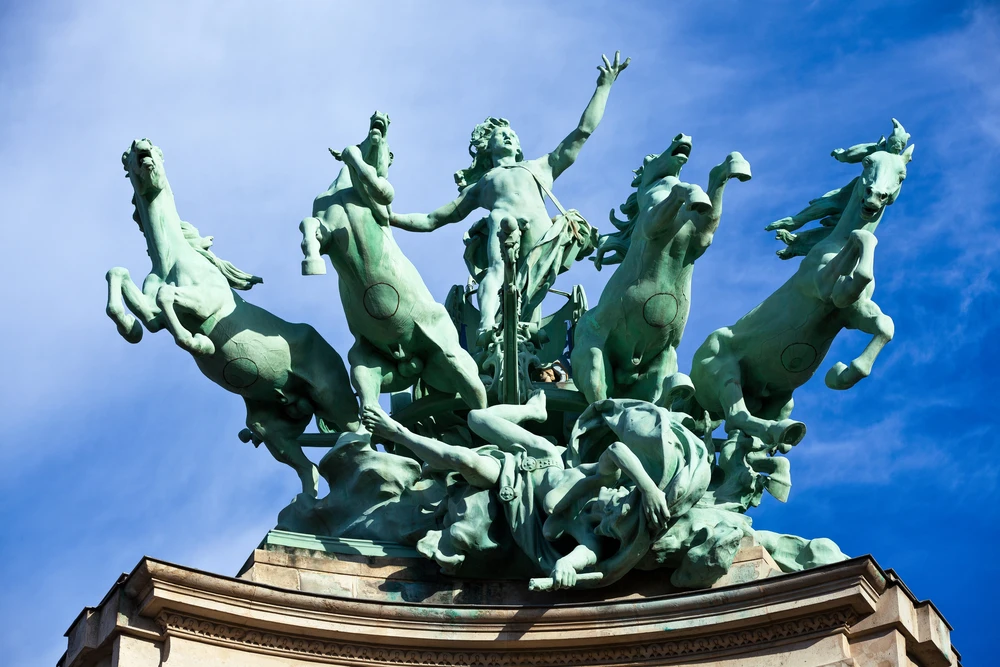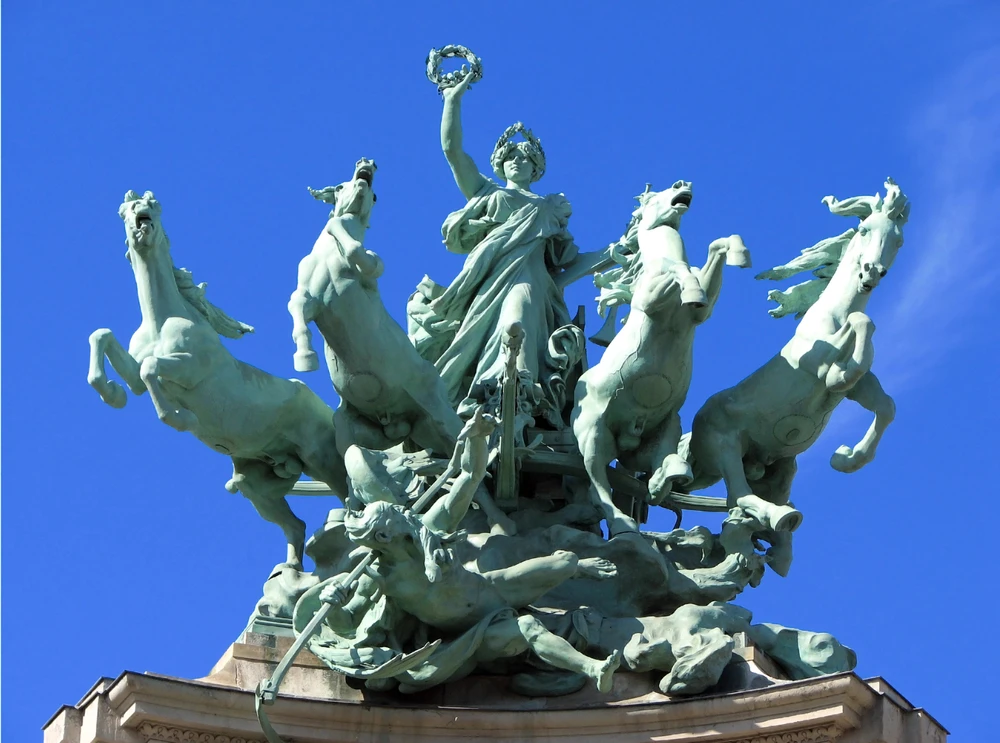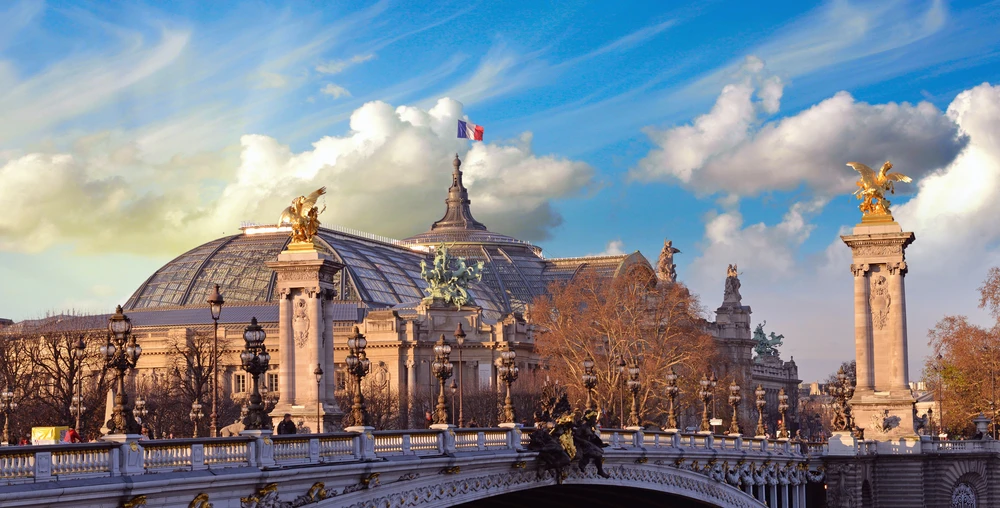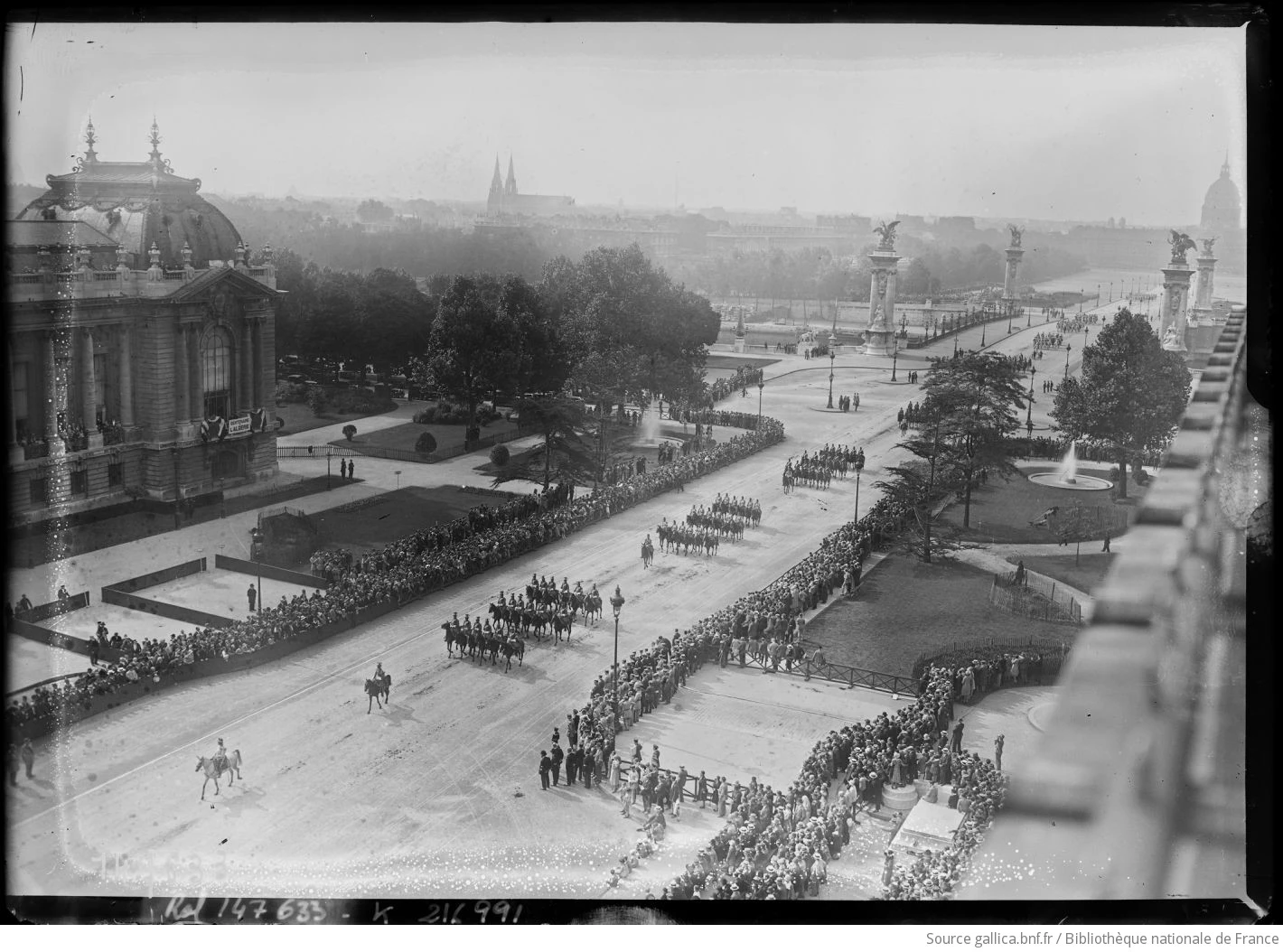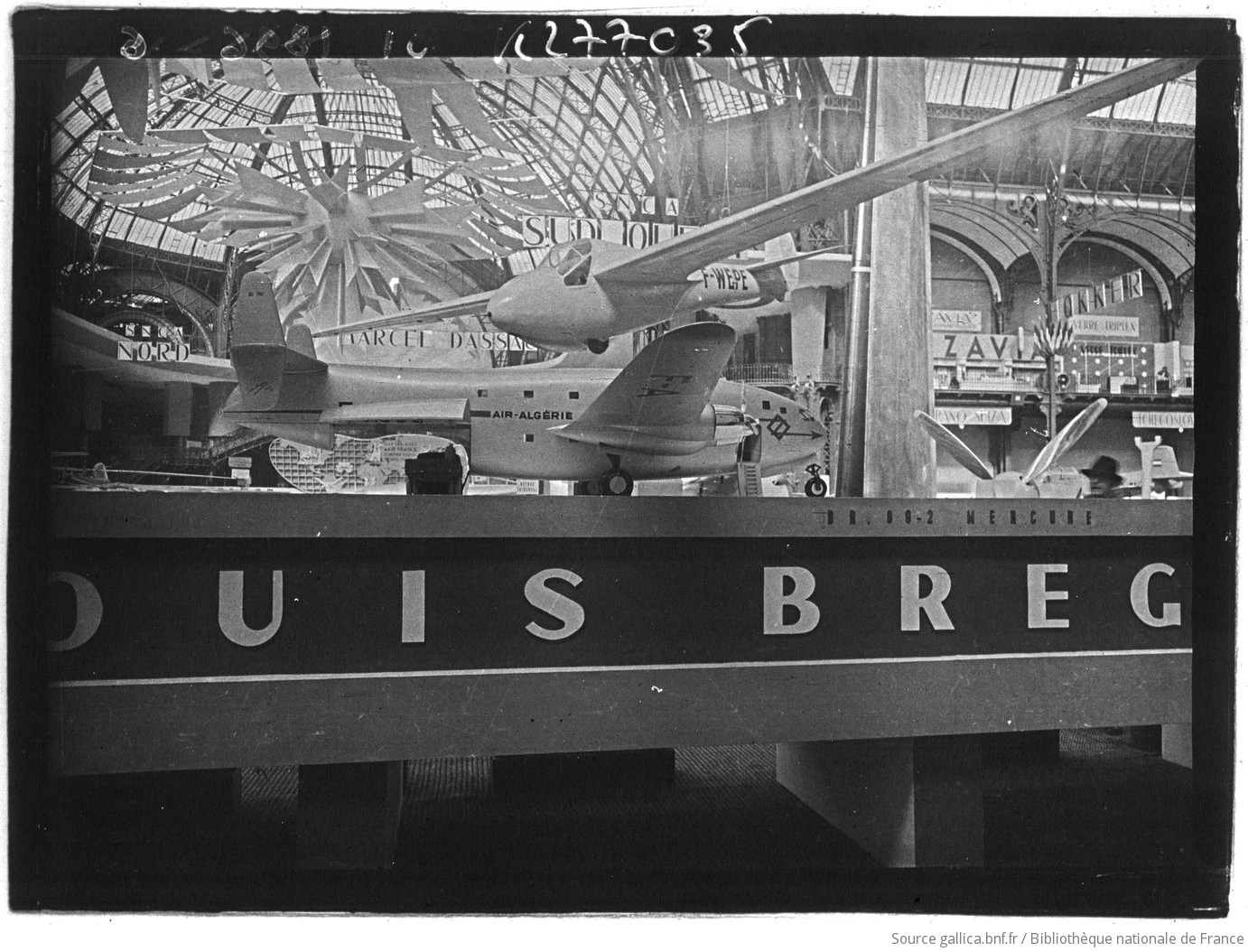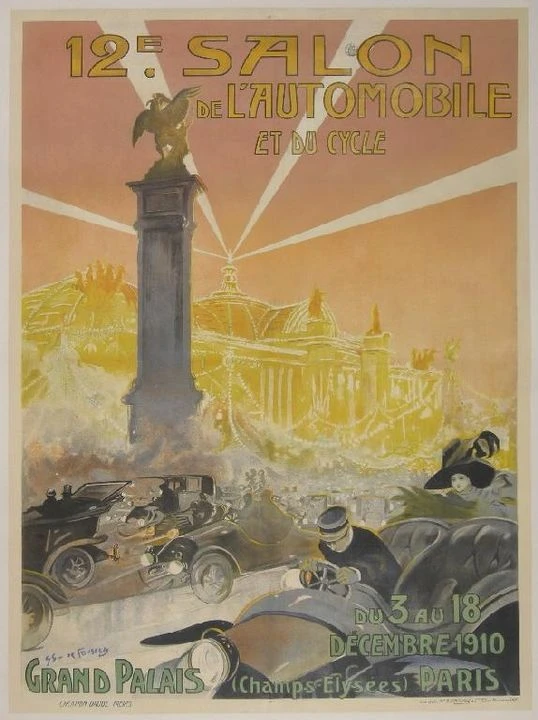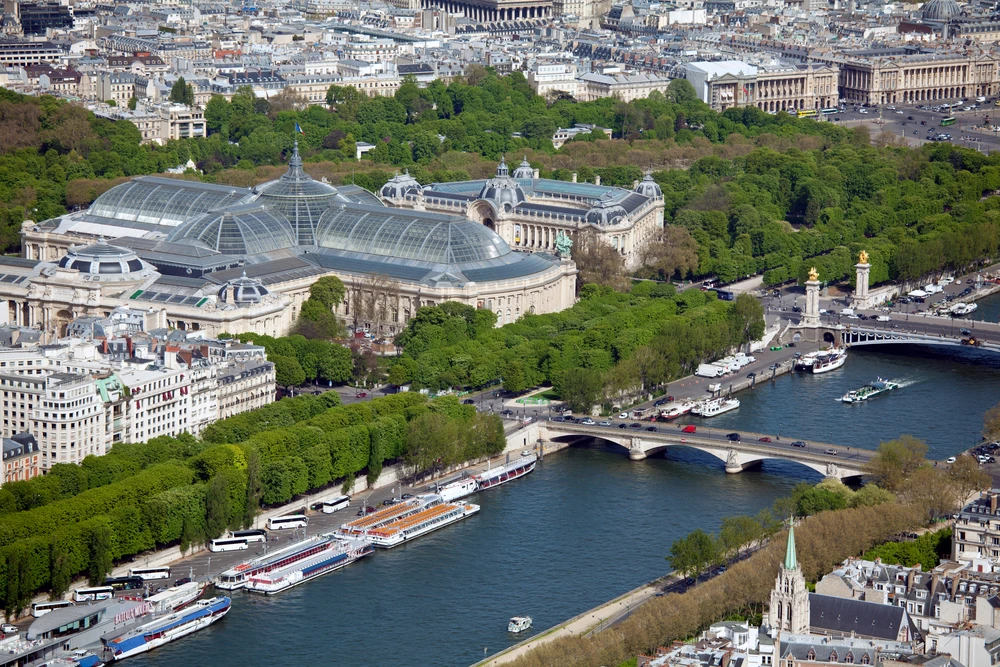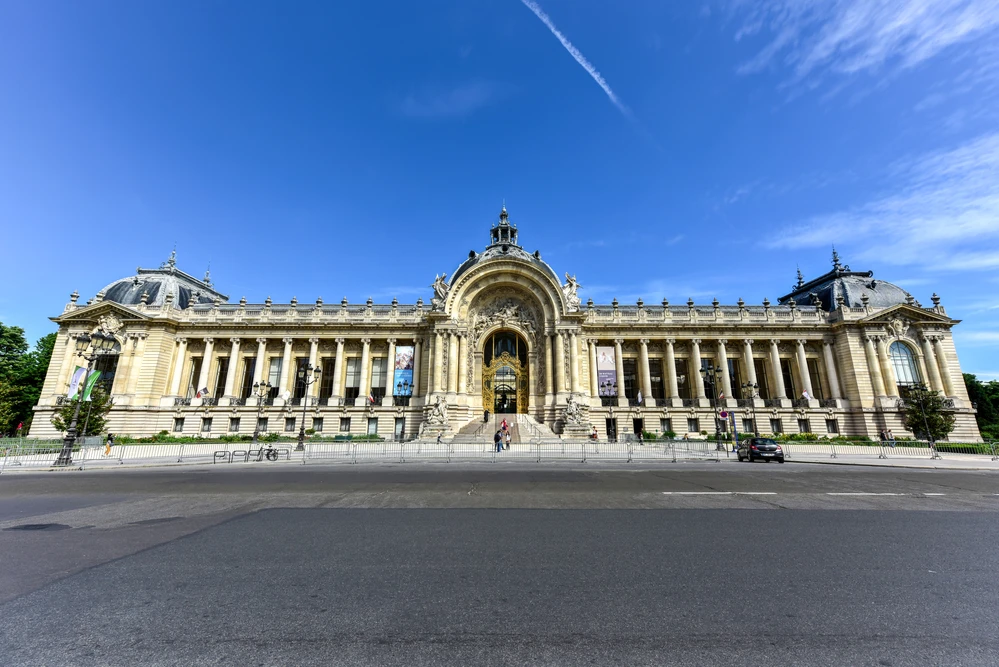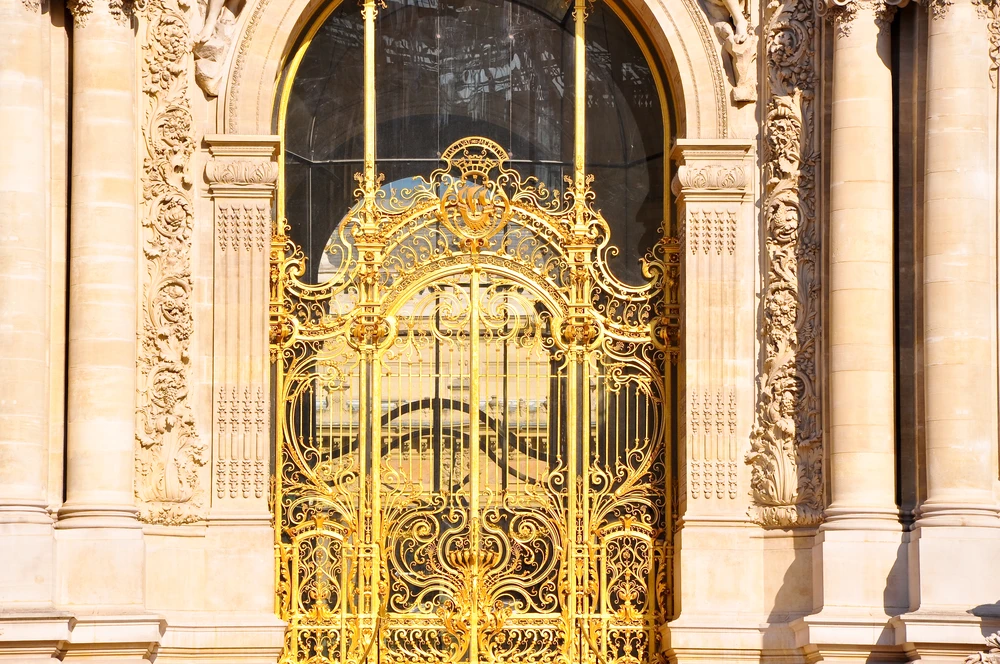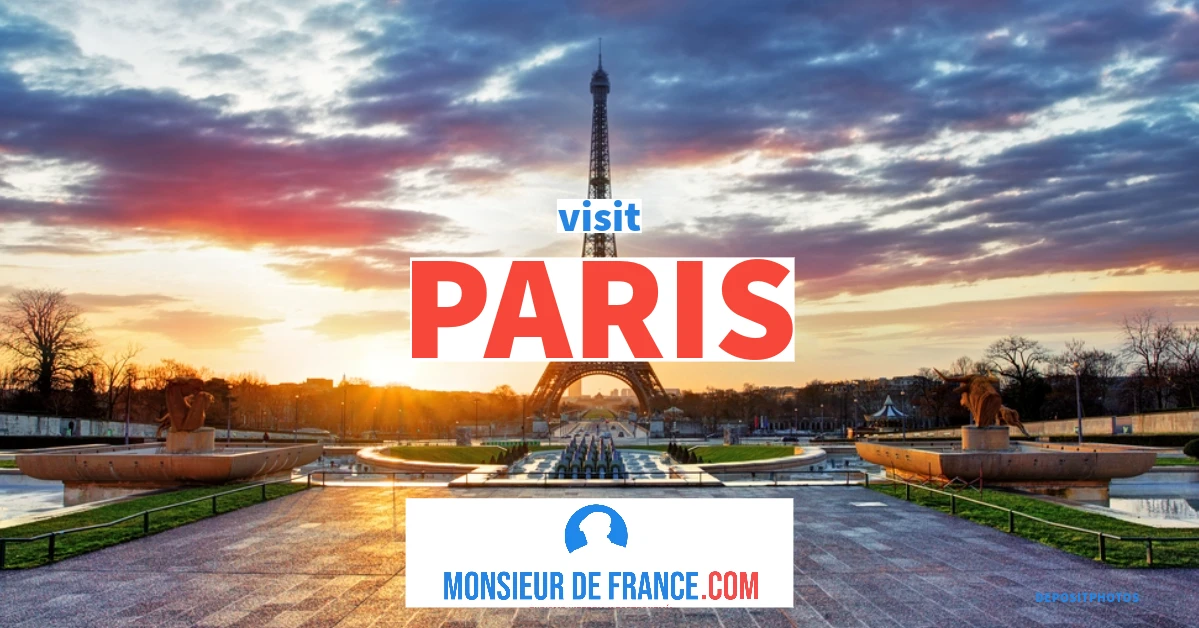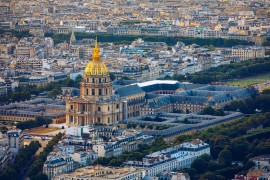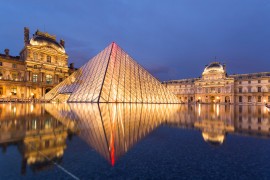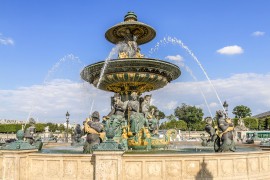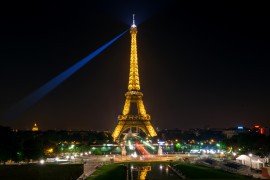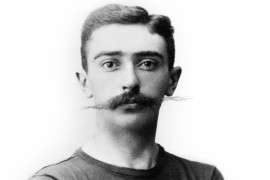Grand Palais in Paris: what to see?
Beautiful photo of the main facade of the Grand Palais by sanchezn - Personal photo, CC BY-SA 2.5, https://commons.wikimedia.org/w/index.php?curid=1796136
Architecture:
The main facade is magnificent. It measures 240 meters , and the view of the colonnade from the Seine is truly breathtaking. It marks the apogee of "eclecticism", the style that marked the end of the 19th century, blending Baroque, Classical and the floral side of Art Nouveau. In the center of the facade are two main groups: on the left, Minerva protecting the arts (by Raoul Verlet) , and on the right, Peace (by Henri-Edouard Lombard). Numerous stone statues line the facades and sides. These include drawing, theater and industry, as well as the Egyptian, contemporary and Greek arches. The pillars are adorned with friezes featuring putti (naked children) at work drawing or making.
The Grand Palais by night / Photo selected by monsieurdefrance.com @ AndreyKr via depositphotos.
The quadriges
"Harmony triumphing over discord" by Georges Récipon. Photo chosen by monsieurdefrance.com: giuseppemasci.me.com via depositphotos.
At both ends, bronze quadrigas by Georges Récipon (1860-1920). On the left, on the Seine side, we see "Harmony triumphing over discord"; on the right, on the Champs Elysées side, we see "Immortality outstripping time".
"Immortality ahead of time" by Georges Récipon. Photo chosen by monsieurdefrance.com: checco via depositphotos.Com
The mosaics on the main facade
You can't see them much, because of the columns, but the main facade is adorned with magnificent mosaics over a length of 74 meters, in 10 panels totaling 273 M2 . Created by Auguste Maximilien Guilbert-Martin and René Martin, they celebrate the civilizations of 1900, starting with medieval France and the Italian Renaissance. They also evoke Ancient Rome and Greece, Egypt and Mesopotamia, as well as Africa, the Orient, Asia and Indochina, with the temples of Angkor during the French protectorate. Both Americas are also covered, as are China and Japan.
The history of the Grand Palais
The Grand Palais / Image chosen by monsieurdefrance.com: Jovannig via dépositphotos.
The showpiece of the 1900 Paris Exposition Universelle. The idea was to have a more modern, more beautiful and more solid Parisian version of London's Crystal Palace, built in 1851.Glass and metal were in vogue. So Paris got itself a huge exhibition palace that blended styles from Baroque to Art Nouveau. It took 1,500 workers just 3 years to complete the building, which combined the designs of 3 architects: Henri DEGLANE for the main facade, Albert LOUVET for the middle section and the Grand Salon, and Albert THOMAS for the rear section, all under the direction of Charles GIRAULT. It was inaugurated by Emile LOUBET (1838-1939), President of the Republic, on May 1, 1900. The Palais de la découverte was added in 1937.
The July 14th 1930 parade passes in front of the Grand Palais. Source de monsieurdefrance.com : Collection BNF Bibliothèque Nationale de France via Gallica.fr
He has seen so much of this incredible building.
An exhibition venue from the outset, it was also used for circus shows, a funfair, concerts and fashion shows. It was also a place dedicated to culture, with, for example, the Salon des Artistes Français (which is still held today), and the Salon d'Automne, which caused such a scandal in 1905 when 39 works by Matis, Braque and Derain were exhibited, that the President of the Republic, Emile Loubet, refused to open the exhibition. The Grand Palais was dubbed "the cage of fauvists" , and the paintings of those who were to become benchmarks were deemed unworthy of being exhibited: the press described the works as "shapeless bariolages" or "pots of paint thrown in the public's face" .More recently, exhibitions of international stature have attracted thousands of visitors , including the PICASSO exhibition (in 2008 and 2015); Claude Monet in 2010, Toulouse-Lautrec in 2012, as well as Hergé, creator of Tintin, in 2015 and Mickael Jackson in 2018.
The interior of the Grand Palais during the 18th Paris Air Show in 1949. Photo chosen by monsieurdefrance: Gallica.fr / Bibliothèque Nationale de France.
The Grand Palais was also the venue for the Concours Lépine (the famous inventors' competition) for 60 years, and for the Salon de l'Automobile, which showcased some of France's most famous cars, including the famous 2-hp Dodoche. It's also nicknamed the Aviary for an exhibition of airplanes and hot-air balloons suspended in the nave.
1912 automobile show poster By Gaston Simoes de Fonseca (1874-1943) Domaine public, https://commons.wikimedia.org/w/index.php?curid=31145090
And also sporting events like the Show Jumping Competition or in 2024 some of the events of the PARIS 2024 Olympic Games: Fencing and Wheelchair Fencing and Taekwendo and para-Taekwendo. The Grand Palais has seen it all: the best of humanity's inventions, creations and, alas, war, as it was used as a military hospital during the First World War.
The Grand Palais seen from the sky. Photo chosen by Monsieurdefrance.com: Rostislavv via depositphotos
And it almost disappeared.
In the 1960s, André MALRAUX (1901-1976), General de Gaulle's Minister of Culture, wanted to create a museum dedicated to the arts of the 20th century. He entrusted the task to the architect LE CORBUSIER (1887-1965), who simply proposed demolishing the Grand Palais and building the new museum in its place. Discussed, the project was eventually abandoned.
Le Petit Palais
The facade of the Petit Palais. Photo chosen by monsieurdefrance.com: Demerzel21 via depositphotos.
Directly opposite the Grand Palais is the Petit Palais. The 125-meter-long facade features a splendid gilded wrought-iron door designed by Charles Girault. It is also decorated with several statues, including, in the center, "la Ville de Paris protégeant les arts" by Jean-Antoine Injalbert (Paris is the seated woman holding a ship), on the left, "les quatres saisons" by Louis Convers (they carry sheaves of wheat) and on the right, the Seine and its tributaries. The semi-circular interior garden is astonishing, and the colonnade is very pretty. Inside, the vestibule ceiling features 4 paintings by Albert Besnard: thought, mysticism, plasticity and matter.
The entrance gate designed by Charles Girault. Photo selected by monsieurdefrance.com; phototraveler via depositphotos.
The Petit-Palais is one of the 14 museums of the city of Paris. It is a permanent exhibition space, and its 7,000 m2 of floor space include works by Rembrandt, Dürer and Fragonard, as well as sculptures from antiquity to the present day. Temporary exhibitions are held regularly.
How do I get to the Grand Palais? How do I get to the Petit Palais?
Address
The Grand Palais is located Place Joffre 75 000 PARIS.
Parking: Ecole militaire / Joffre / Champs de Mars
Metro
Grand Palais
Lines 6 / 8 or 10: Stations: Ecole Militaire / La Motte Piquet Grenelle
Petit Palais
Lignes 1/13 : Champs-Elysées Clémenceau
Ligne 9 : Franklin D. Roosevelt
Bus
Grand Palais
Lignes 28 / 80 / 82 / 86 / 92
Petit Palais
Lignes 28 / 42 / 72 / 73 / 80 / 83 / 93
RER
Grand Palais and Petit Palais
Line C / Les Invalides station
Opening hours :
Grand Palais : Monday to Friday 10H00-22H00 except Thursday 10H00-20H00. Closed TUESDAY except during school vacations. Closed on December 25. Check the opening times on the website, it's a bit confusing to summarize.
Petit Palais: Tuesday to Sunday 10:00 am - 6:00 pm (last admission 4:15 pm, nocturne until 8 pm Friday and Saturday). Closed on January 1, May 1, July 14, November 11 and December 25.
Rates
Grand Palais: Full price 11 euros (2024 prices).
Petit Palais: access to the permanent collections is free.
Prices are indicative and not binding on Monsieur de France. To find out, go to the official website (and book in advance, it's quicker and more convenient).
Website
The official Grand Palais website
Official website of the Petit Palais
It's all around the Grand Palais and Petit Palais.
Around the Grand Palais, on the same bank of the Seine, you'll find the Place de la Concorde, the Madeleine (and not far away the Rue du Faubourg Saint Honoré with the Palais de l'Elysée), the Tuileries gardens and the Louvre. You're also very close to the bateaux-mouches pier. On the other side of the river , you'll find the Assemblée Nationale, the Invalides, the Pont Alexandre III, the Musée d'Orsay and the quays of the Seine, a UNESCO World Heritage site (notably the Quai Voltaire).



